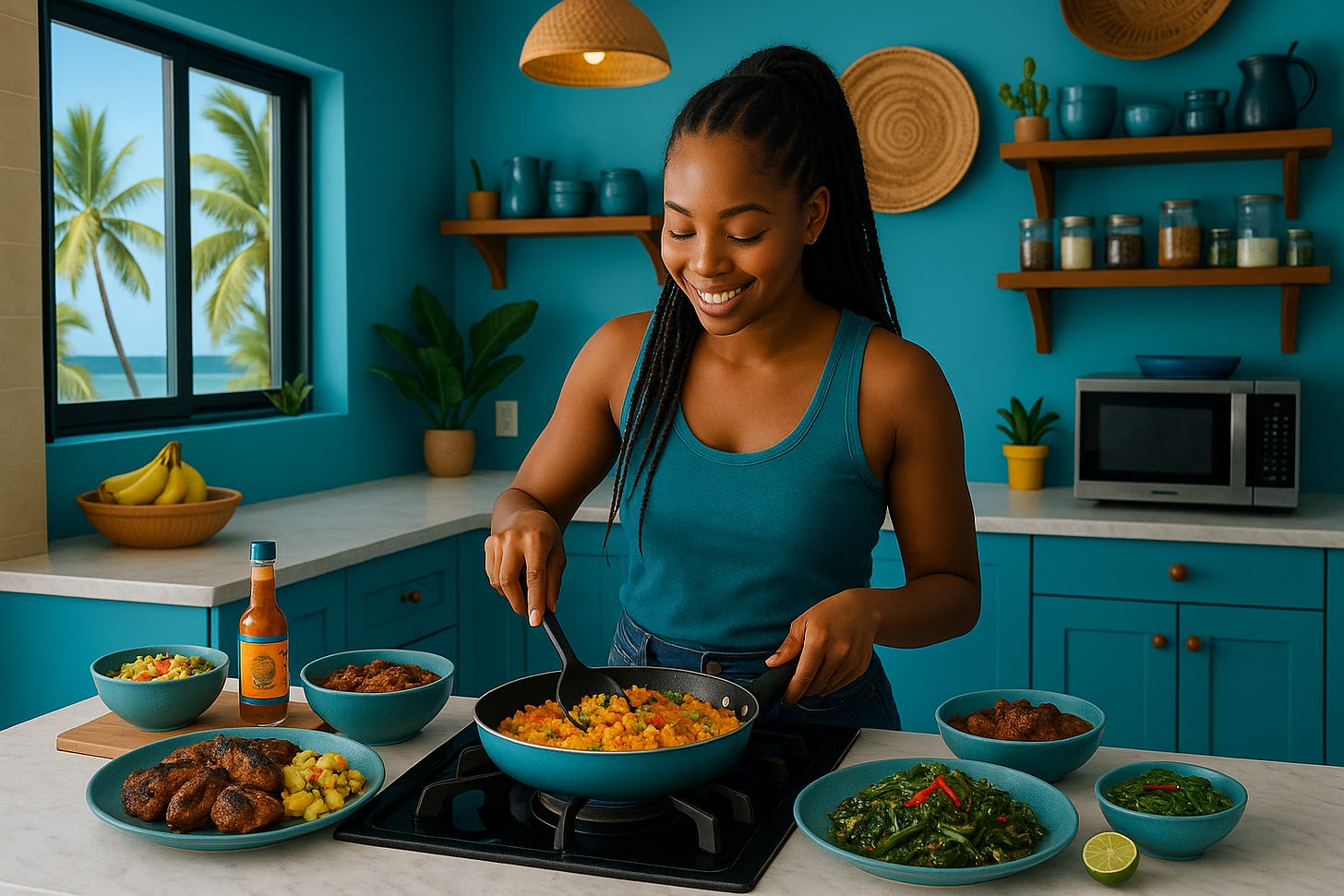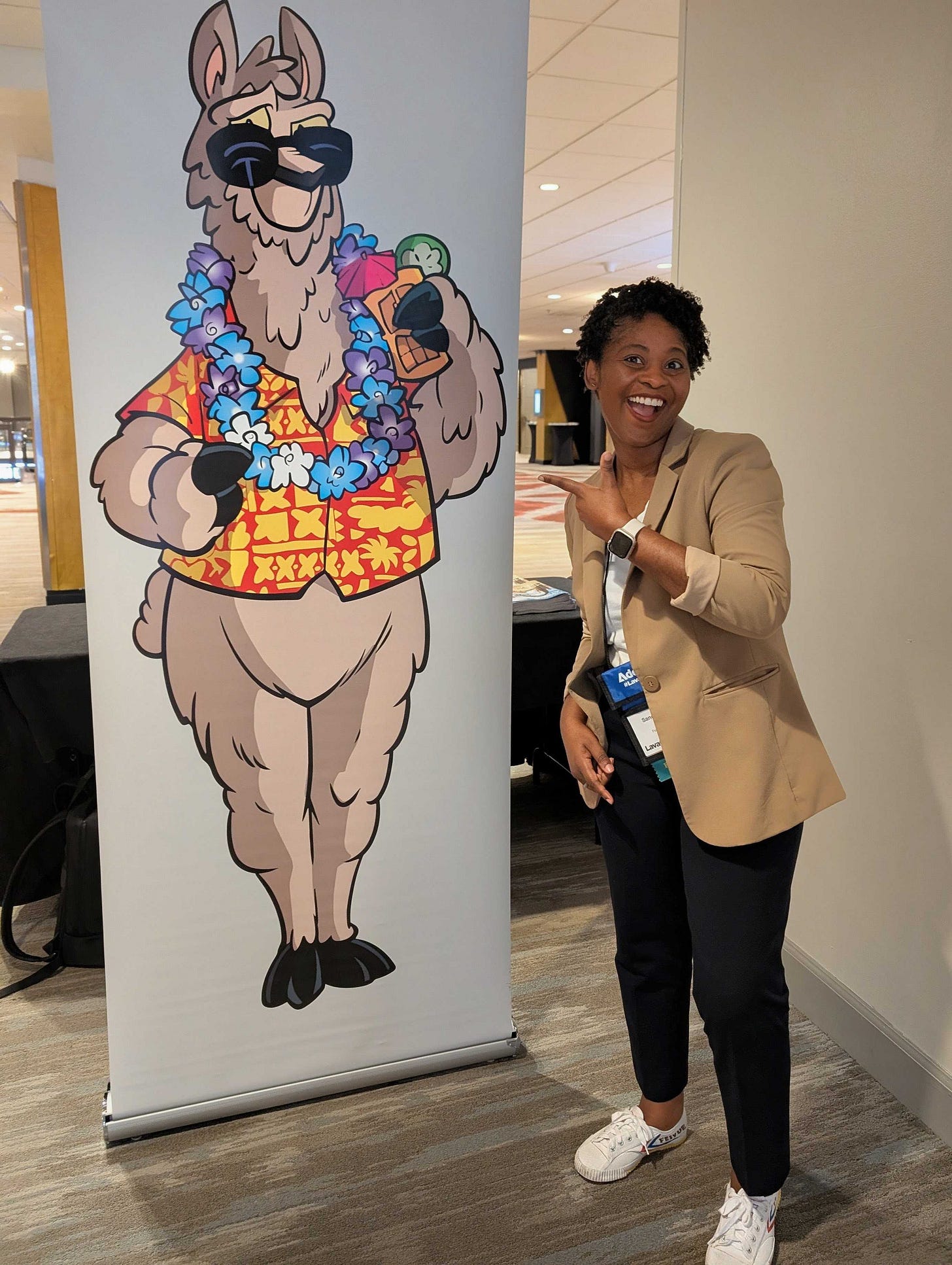The AI That Isn’t Writing Your Recipes
Using AI ethically isn’t about replacing creativity
Here’s something I found fascinating at the content strategy conference I just attended: in three full days of panels, no one mentioned generative AI.
And honestly? That’s a good thing.
Because while tools like ChatGPT or DALL·E get all the headlines, they’re just one slice of what AI can do and not always the most relevant one for creators.
AI doesn’t have to generate your recipes, captions, or visuals to be useful. You can use it behind the scenes to make your systems stronger and your creative life easier:
Use predictive AI to track which recipes or posts perform best.
Use assistive AI to automate scheduling, tagging, or photo sorting.
Use recommendation AI (like Pinterest or YouTube’s algorithms) to understand how your content travels and what helps it surface.
Or, use workflow AI, like a custom GPT, to speed up repetitive tasks—without ever asking it to “write like you.”
That’s what this week’s issue is about: how creators can partner with AI without giving up authorship and how to make the technology work for you in all the ways that don’t involve generating content.
Vocabulary of the Week
Generative AI — Artificial intelligence that can create new text, images, or code based on existing patterns, things like ChatGPT, DALL·E, Midjourney, or Claude.
But the AI that recommends recipes, targets ads, or helps you schedule posts is predictive or assistive; it processes data but doesn’t invent anything new.
Understanding that difference is key so that you can use AI to accelerate work without asking it to create for you.
Blueberri’s Approach to AI
At Blueberri, I’ve built an official AI Usage Policy to guide how AI is used across writing, visuals, and client projects.
It’s simple:
AI assists, it doesn’t author.
All AI-generated visuals are disclosed.
Every word and idea still reflects human strategy and expertise.
I believe transparency builds trust and that creators who use AI responsibly will shape the next era of content with clarity, not confusion. This is a dynamic document and will be updated as needed to include new implications for creating and publishing content.
Meet Zoe, the ethical experimenter

Zoe runs Whisk & Wander, a food-travel blog that pairs recipes with cultural storytelling. She’s creative, strategic, and a little allergic to inefficiency.
Her problem wasn’t creativity, it was time. She spent hours formatting recipes, resizing images, and rewriting metadata before she could even think about her next post.
So she tried something new: a custom GPT.
Instead of using AI to “generate” anything, Zoe trained her GPT to organize and assist. It helps her:
Suggest consistent tags and categories across posts.
Convert recipes into newsletter drafts using her own tone.
Write clear, accessibility-friendly alt text for images.
Each task starts with her words, but it just gets done faster.
That’s the point: ethical AI use doesn’t mean handing over your creativity. It means designing tools that let you spend more time being creative.
Tip: How to Create a Custom GPT (and Why You Should)
Define the task. Pick one repetitive job (e.g., generating alt text or converting blog posts into newsletters).
Create your GPT. In ChatGPT, click Explore GPTs → Create, name it something descriptive (like WhiskBot), and feed it 3–5 examples of your tone, structure, and formatting.
Add guardrails. Include ethical instructions—what not to do (e.g., “Don’t fabricate recipes or cultural stories”).
Test and refine. Run a few drafts, edit for accuracy, and keep updating your GPT with feedback.

Why Ethics Still Matter
Using AI well isn’t just about what it can do, it’s about what you choose to let it do.
Ethical use isn’t fear-based; it’s about intention and ownership. Food is personal. Stories are cultural. And when you publish something—whether it’s a recipe, a photo, or a framework, you’re adding to that shared creative ecosystem.
Here’s how creators can use AI responsibly while keeping their voice intact:
Credit your sources. If an AI tool helps you organize or analyze, say so. Transparency builds credibility.
Stay connected to your craft. Use AI for the setup, but keep the storytelling, context, and emotion human.
Document your process. If you experiment with AI tools, note what they’re used for (and what they’re not). It helps protect your work and teaches others ethical norms by example.
Remember: AI learns from humans, not the other way around. Your creativity is the source material.
Ethics aren’t rules to restrict your work; they’re the framework that makes your creativity sustainable. When you set those boundaries clearly, you lead the conversation instead of chasing it.
The Blueberri Stack
Here’s what’s happening in the broader AI + content world this week:
OpenAI gives rights holders more control & plans revenue-sharing for Sora 2
OpenAI announced new copyright controls for its AI video app, Sora 2, including options for content owners to restrict usage of characters and a plan to share revenue with those who permit AI usage.
Why it matters: This is one of the first major platforms trying to reckon with how AI uses existing content and it signals a shift toward compensating creators in the AI economy.
YouTube to build tools to detect AI-made clones of creators’ likenesses
YouTube CEO Neal Mohan revealed that the platform is developing “likeness detection” tools to catch AI-generated content that copies creators’ faces or voices, giving them options to takedown or monetize.
Why it matters: As generative AI becomes more capable, protecting your identity and image becomes a monetization and legal issue—not just a creative one.
People Inc. acquires Feedfeed, deepening play in creator economy
People Inc., which owns brands like Food & Wine and Allrecipes, acquired Feedfeed, a 12-year-old food publisher and creator network with ~7M followers and ~1,000 influencers.
Why it matters: This signals how traditional publishers are investing in creator networks. It’s a reminder that monetization is becoming less about ads and more about platforms, partnerships, and strategic acquisitions.
Level Up Your Content Opportunities
Want to build smarter systems without losing your voice?
Grab the Tech Partnerships Playbook, now 35 % off, for templates and frameworks to integrate tools, structure, and revenue ethically.
You don’t need to fear AI and you don’t need to hand it your creative reins either.
Use automation to clear your workflow clutter, stay transparent about where AI fits, and double down on the one thing no model can replicate: your perspective.
Until next time, use the tools but keep your taste.
Your friend in food,
Sandie



